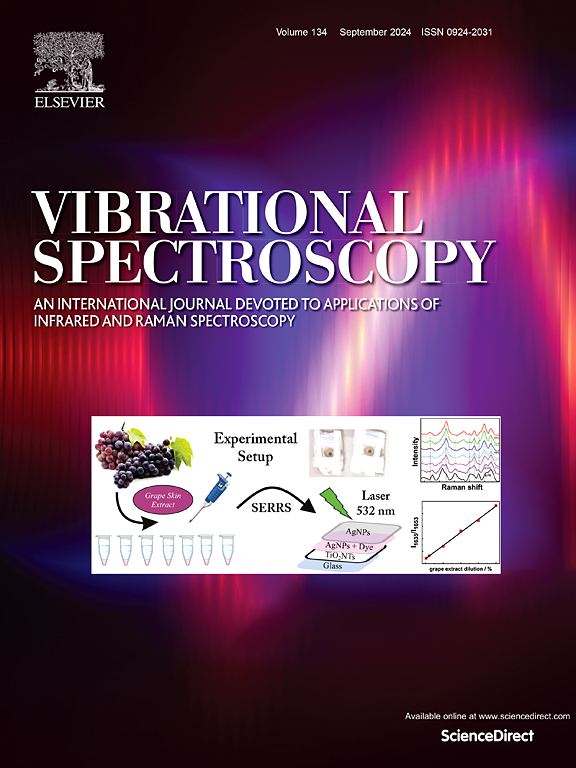Vibrational spectroscopy as a tool for the investigation of polymer bases in motion picture films: A comparison between mid-infrared, near-infrared and Raman techniques
IF 3.1
3区 化学
Q2 CHEMISTRY, ANALYTICAL
引用次数: 0
Abstract
In the present work, numerous samples of motion picture films from different brands and spanning a wide chronological range were examined with the aim of studying their polymeric support materials using various vibrational spectroscopic techniques. The bases of the films investigated included cellulose nitrate, cellulose acetate, polyethylene terephthalate (PET), and cellophane, the support material of the unique Ozaphan films. Regarding Fourier-transform infrared (FTIR) spectroscopy, the external reflection (ER) technique was employed, both in the mid-infrared (MIR) range and in the longer-wavelength portion of the near-infrared (NIR) region. For Raman spectroscopy, the sequentially shifted excitation (SSE™) technique was used to minimize issues related to potential fluorescence emission. The information provided by each technique was carefully considered, particularly in terms of penetration depth and specificity towards certain molecular structures. Furthermore, diffuse reflectance spectroscopy in the entire NIR range was combined with partial least squares (PLS) regression of the spectral data to estimate the degree of substitution (DS) of the polymer in cellulose acetate bases. This parameter is influenced both by the historical period in which the films were produced and possibly by degradation phenomena.
振动光谱学作为研究电影胶片中聚合物基的工具:中红外、近红外和拉曼技术的比较
在目前的工作中,研究了来自不同品牌和跨越广泛时间范围的电影电影的大量样本,目的是使用各种振动光谱技术研究它们的聚合物支撑材料。所研究的薄膜的碱包括硝酸纤维素、醋酸纤维素、聚对苯二甲酸乙二醇酯(PET)和玻璃纸,这是独特的Ozaphan薄膜的支撑材料。对于傅里叶变换红外(FTIR)光谱,在中红外(MIR)范围和近红外(NIR)区域的较长波长部分采用了外反射(ER)技术。对于拉曼光谱,使用顺序位移激发(SSE™)技术来最小化与潜在荧光发射相关的问题。每种技术提供的信息都经过仔细考虑,特别是在穿透深度和对某些分子结构的特异性方面。此外,将整个近红外范围内的漫反射光谱与光谱数据的偏最小二乘(PLS)回归相结合,估计了聚合物在醋酸纤维素碱中的取代度(DS)。这个参数既受电影制作的历史时期的影响,也可能受退化现象的影响。
本文章由计算机程序翻译,如有差异,请以英文原文为准。
求助全文
约1分钟内获得全文
求助全文
来源期刊

Vibrational Spectroscopy
化学-分析化学
CiteScore
4.70
自引率
4.00%
发文量
103
审稿时长
52 days
期刊介绍:
Vibrational Spectroscopy provides a vehicle for the publication of original research that focuses on vibrational spectroscopy. This covers infrared, near-infrared and Raman spectroscopies and publishes papers dealing with developments in applications, theory, techniques and instrumentation.
The topics covered by the journal include:
Sampling techniques,
Vibrational spectroscopy coupled with separation techniques,
Instrumentation (Fourier transform, conventional and laser based),
Data manipulation,
Spectra-structure correlation and group frequencies.
The application areas covered include:
Analytical chemistry,
Bio-organic and bio-inorganic chemistry,
Organic chemistry,
Inorganic chemistry,
Catalysis,
Environmental science,
Industrial chemistry,
Materials science,
Physical chemistry,
Polymer science,
Process control,
Specialized problem solving.
 求助内容:
求助内容: 应助结果提醒方式:
应助结果提醒方式:


